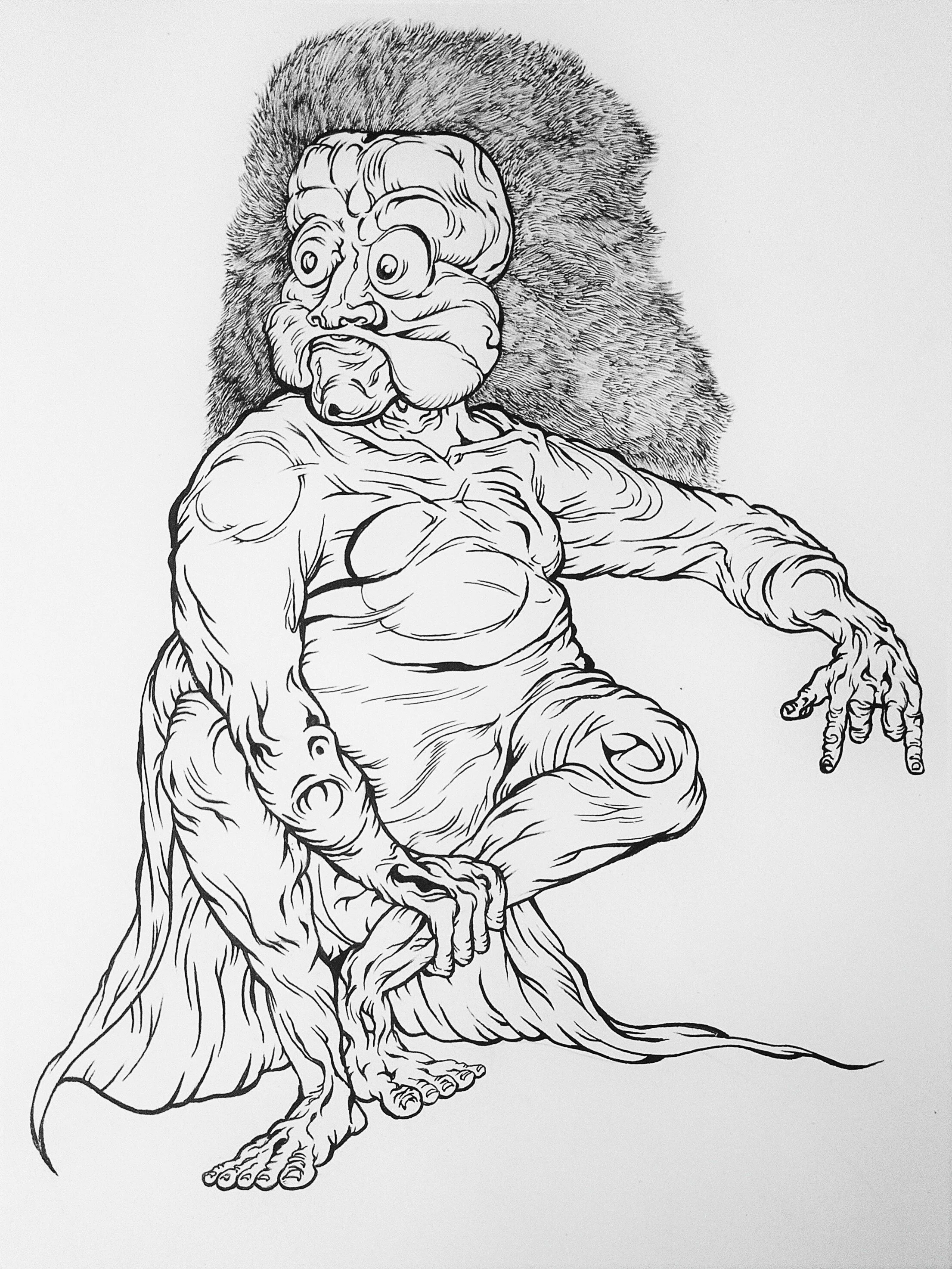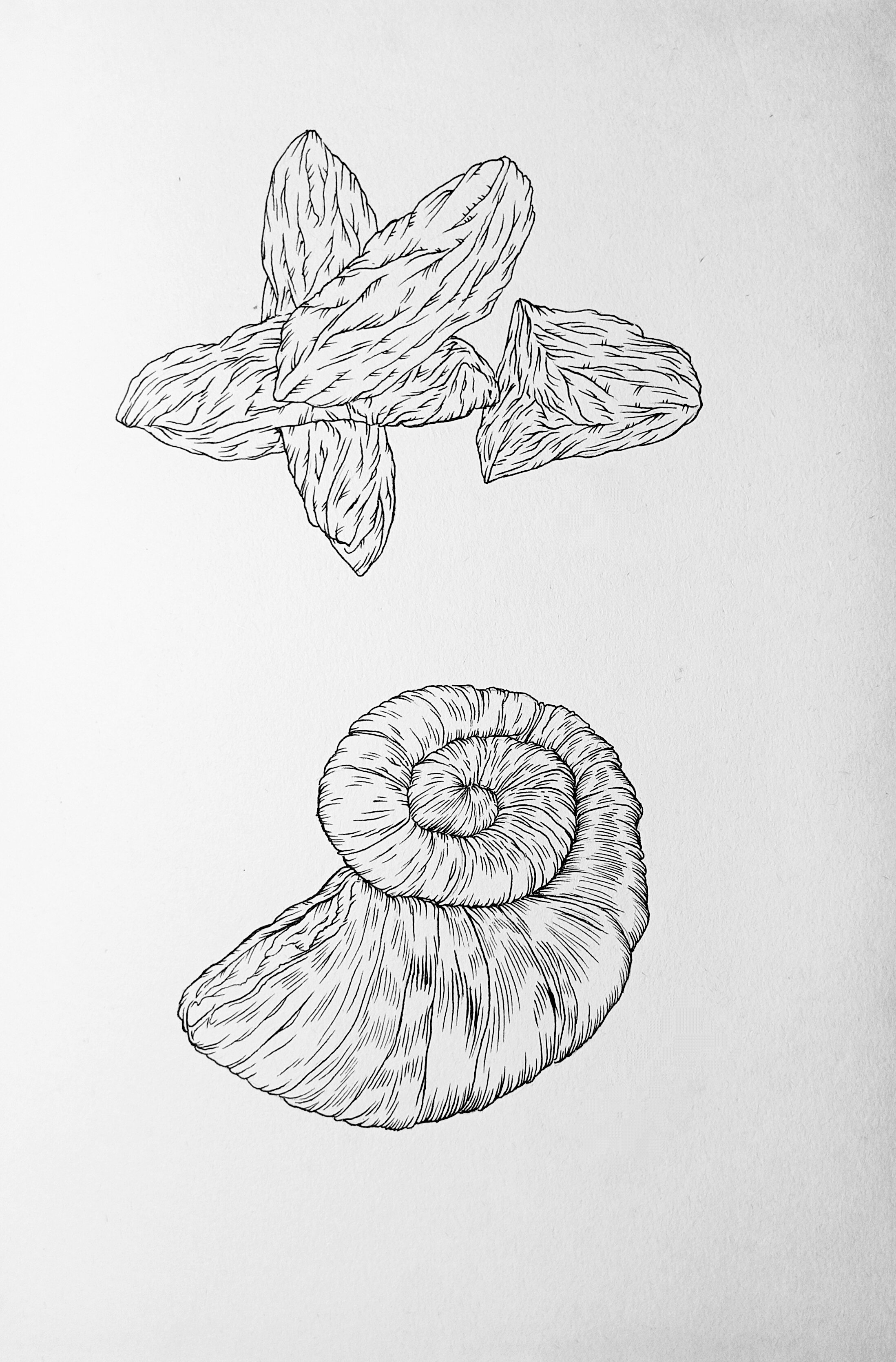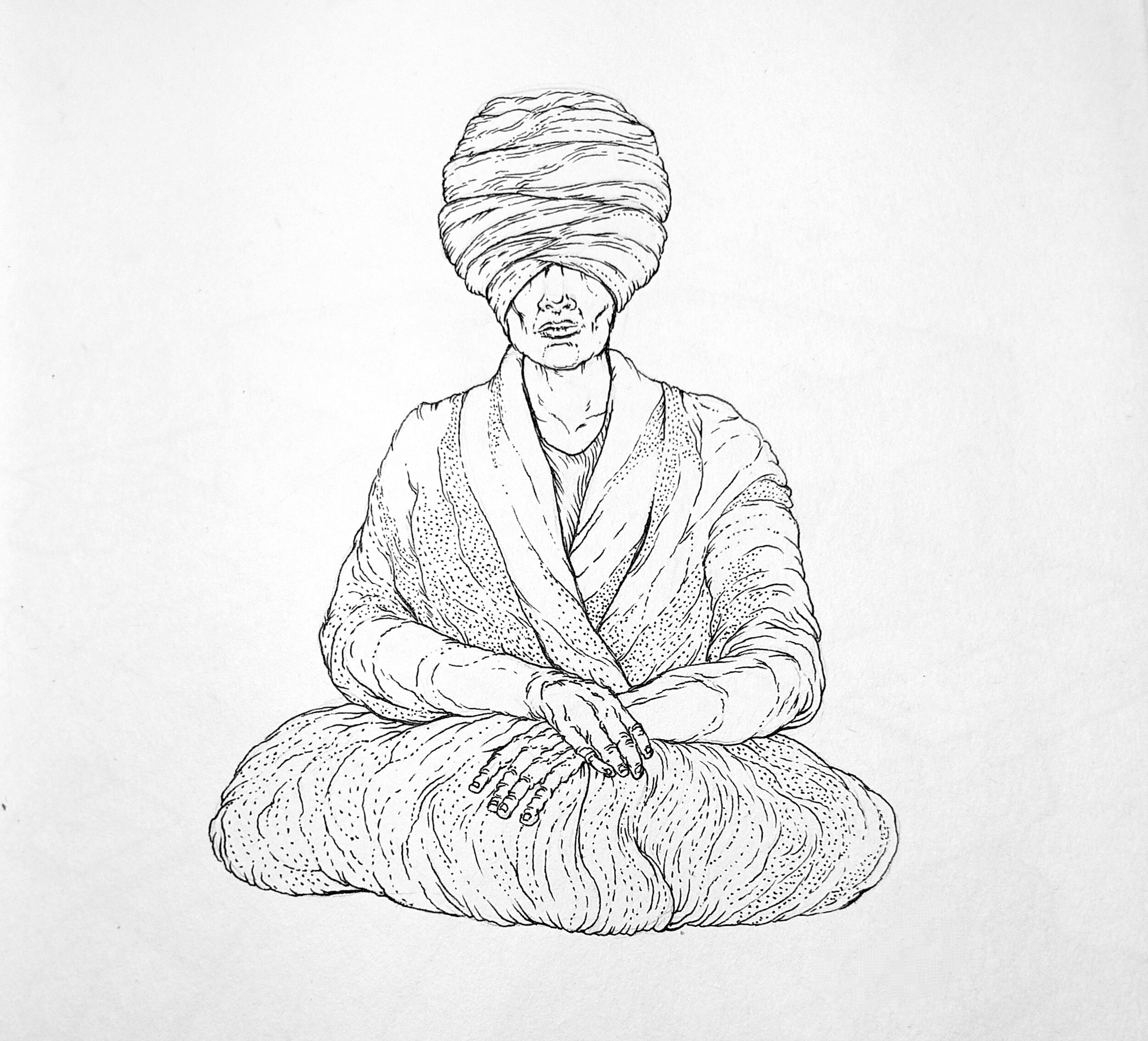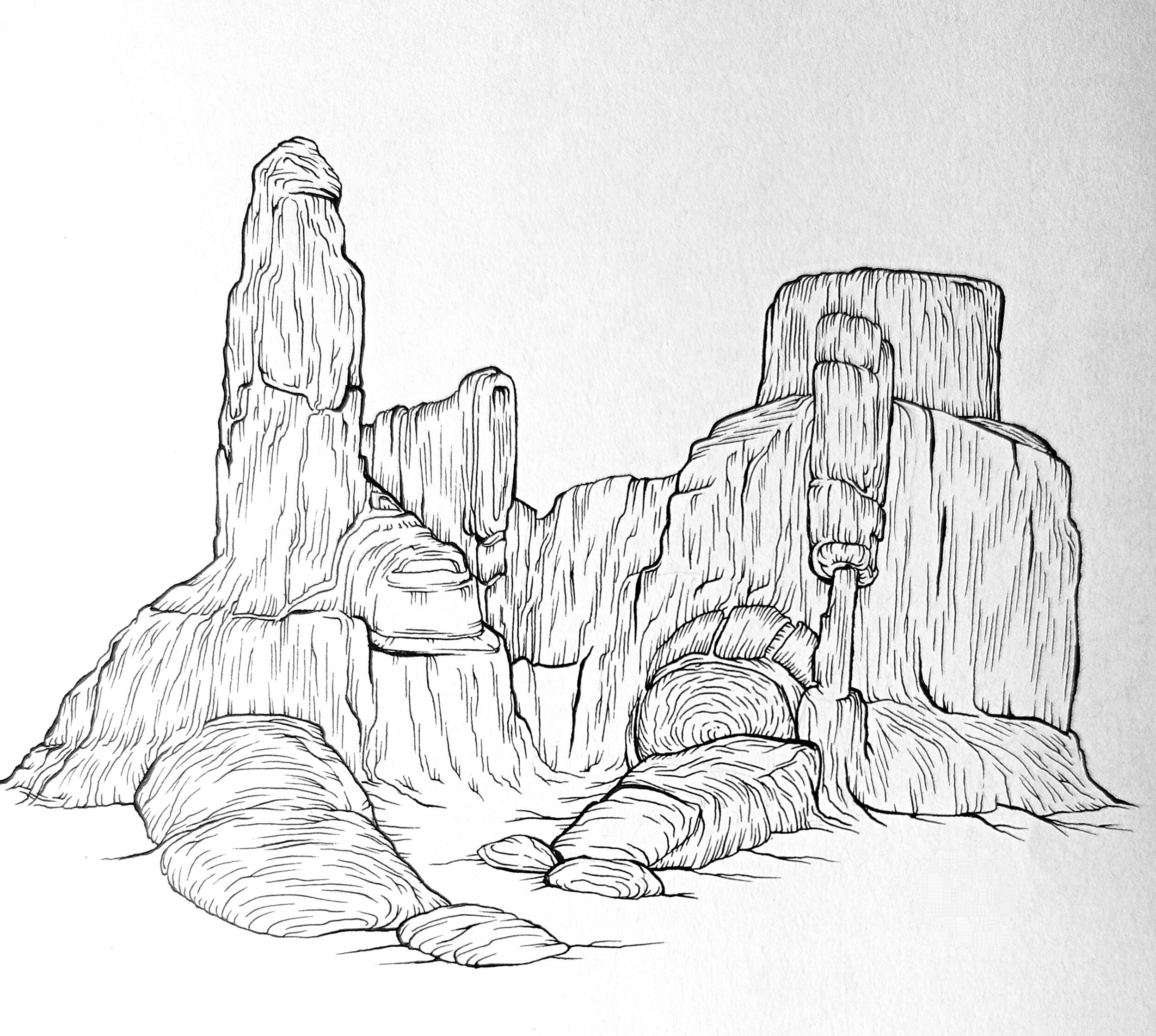In this text and display of his work, Sahej Rahal takes us on a kaleidoscopic journey through his remixes of folklore, urban legends, and science fiction in order to recast and investigate the origins, nuances, and narratives that inform current fables of our digital existences. Zooming in on the figure of the trickster, he pursues a historiography of resistance to envision models for escape which rely on notions of co-existence.
My project at Digital Earth explores the creation of mythological narratives with artificial intelligence (AI) programs. I investigate the myths that construct our digital reality by comparing the extra-human tendencies of AI with two non-human phenomena, the Virus and the Conspiracy. These systems have come to define our present moment by perturbing collective conceptions of subject, citizen, self, and spectre, toxicity, and time.
The proliferation of Artificial Intelligence promises us Enlightenment 2.0, eliciting a future devoid of uncertainty. It ushers us towards this utopia with a telos of efficiency, promising us the perfect life journey, from the roads we take to the partners we choose. This promise transform the inhabitants of the coming future into ionized categories of data sets that reveal even the unformed recesses of affect, memory, and desire, blinding us in machinic light.
However, in the receding shadows of this polarizing narrative, a resistance emerges from the secret history of spy-craft, cybernetics, and its legacy of cyphers and code-names.
Current activist strategies, among them guerilla journalists who play hide-and-seek with layers of identity, and encryption tactics, build upon this legacy which turns online anonymity into a tool of liberation. A recent example of this is the farmers protests in New Delhi, where farmers are challenging wide spread disinformation campaigns run by troll armies by creating self made publications, journals, and anonymized self-reportage systems that articulate the political and social challenges faced by the farmers movement.
While the datafication of the citizen-subject through AI is being weaponized to streamline our existences into the spectacle of a technological singularity, the figure of the digital ghost proffers a model for escape. Existing in parallel with activist strategies and the secret digital history, the ghost inhabits spaces with a haunting presence that anonymously observes and disrupts the systems at play.
The transformative agency of the ghost as a trickster echo mythological conceptions of the Virus and the Conspiracy. Folklore presents us with similar tales of resistance against status quo.
The interwoven nature of viruses, folklore creatures, and mythological beings find their roots in the Colonial Raj in India. During this time, pandemic outbreaks were believed to be the machinations of demonic forces and wrathful gods. We find extensive descriptions of the shapes taken by spectral diseases in the Raj in The Folklore of Bombay (1925) by Reginald Edward Enthoven, and Notes on The Spirit Basis of Belief and Custom (Rough Draft) (1923) by James MacNabb Campbell.
Their texts elucidate how the Indian caste system, which is itself a mythologically mandated system of social oppression and dehumanization, violently exacerbated this conception of disease. The lower castes, who had been historically forced into sanitation work and manual scavenging, were thought to collude with these viruses through black magic, and were further subjected to violent retribution. This supposed origin of diseases however, gave rise to its own inverse as well.
A rumour began to spread, as fast as the plague itself; the lower castes could converse with the disease. They became Bhagats; exorcists that could negotiate with the sickness, and drive it away from the bodies of men.
Their rituals would begin with the burning of incense to beating drums. The exorcist would raise a burning wick in one hand, and a broom made of peacock feathers in the other, performing a vigorous dance to frighten out the spirit possessing the afflicted, and offering their own bodies to be possessed. They would begin shaking as if in a fit, hurling abuses at the spirit and threatening it repeatedly, growing louder and vigorous till their words and movements become an illegible turbulence of noise and fury. It was not uncommon to see the patients partake in the chaos of the ritual, rising to dance or sing or cry inconsolably. Some would violently throw their fists to the air, attacking the invisible demons, while others were known to stand solemnly making long oratory speeches at their demons.
The exciting irrationality of this supernatural occurrence hides a far more subversive act. One that upstages the violent metaphysics of the caste system. The ritual becomes an act of radical cohabitation, between forces that have been excluded from the human world, and those that have been dehumanized by it, returning to challenge it with the turbulence of revolution.
As such, mythological conceptions of the inhuman/human and the parables of overcoming systems of control, could nuance current conceptions of the Virus, the Conspiracy and AI. These curiosities led me to create a series of virtual worlds using video game software to imagine the possibility of cohabitations, between human and extra-human systems.
In the first of these worlds, we witness an AI simulation that follows a bipedal creature wandering a virtual forest. It moves with a strange staccato inside its tropical biome. This biped is not driven by a single brain but a collection of multiple AI scripts that are attached to the virtual bones within its calcified petroleum body. Each of these scripts is capable of ‘listening’ to the physical world outside the program, by picking up audio cues through the computer’s microphone. This audio feedback interrupts the movement of the wandering creature. When inputs above a certain intensity are registered, it emits a burst of molten black petro-forms. ln the body of this petro-being, the hierarchy of mind, limb, and ear has collapsed, making them indistinguishable from each other. They act as a consortium of ungoverned organs, that collectively bring this creature to life.
Below are a few tests that I made with the program responding to different sounds:
Ambient sounds from my apartment - includes everything from birds to construction
Voice Test
Synthesizer test
In the second world this creature wanders inside an oil field. The program, called 'ifrit.exe', is named after a Persian fire demon. It simulates a stampede, where multiple ifrits run across the desert landscape in response to sound. The barren landscape is boxed within gargantuan concrete walls and a seemingly infinite oil pipeline runs across it. This oil world was imagined by the influence of philosopher Reza Negarestani’s Cyclonopedia (2008). The book explores a cryptic narrative of an ancient petroleum demon, birthed from fossils to wage war against the Empire of the Sun (whose present counterpart is western capitalist imperialism). Humanity is premised as a pawn between these two forces, inadvertently forwarding the cause of one being of the other through the course of history making the entire project of civilisation collateral damage to this ancient wargame
The third world depicts an actual video game that I am currently working on.
The player takes control of an all-terrain delivery bot, who carries the head of a six-eyed crimson being on its back. Rumour has it that this head might belong none other than Mahakala, an all but forgotten avatar of Shiva, who in this form becomes the guardian deity of time itself. The game begins at the foot of a massive blockade of cargo containers followed by monolithic concrete blocks. The game world is a barricade that has turned into a labyrinth.
However, the robot is a free-runner, and the player can navigate the environment by vaulting over concrete, ledge jumping across great heights, and running across vertical walls. As the player finds their way through the labyrinth, the crimson head tells them a story of the bygone world, and each turn they take reveals a new shift in the tale.
As the player ascends the walls, they will find themselves under the shadow of the third fossil creature, a massive quadruped, shaped from crystallized petrol. This creature is a sentient being created using the same principles that drive the previous biped. This encounter is punctuated with another discovery, the player will learn that they are able to communicate with the oil being, as both their movements begin to collectively transform the soundscape of the game world.
This act of cohabitation between the player and the creature, tests the limits of language as a mode of communication. Exploring this concept has become the central curiosity driving the project. The video game renders a dialogue between mythic and machinic worlds, where we might find new ways to speak.
References:
Books, Articles, Essays:
Rosi Braidotti, The Posthuman (2013)
C.K. Raju, Eleven Pictures of Time (2003)
Donna J. Haraway, A Cyborg Manifesto (1985)
Sudhir Kakar, Shamans, mystics, and doctors (1982)
Chen Qiufan, Coming of the light, The Smog Society (2015)
Jason Bahbak Mohaghegh, Night, Omnicide (2019)
Reza Negarestani, Cyclonopedia, Labour of the Inhuman (2014)
Reza Negarestani, Cyclonopedia (2008)
Alejandro Jodorowsky, Moebius, The Incal (1980–2014)
Films:
Blade Runner – Ridley Scott
Solaris - Andrei Tarkovsky
Tumbbad - Anand Gandhi, Rahi Anil Barve
Games:
Death Stranding
Prince of Persia
Other resources:
New Centre for Research & Practice
learn.unity.com






